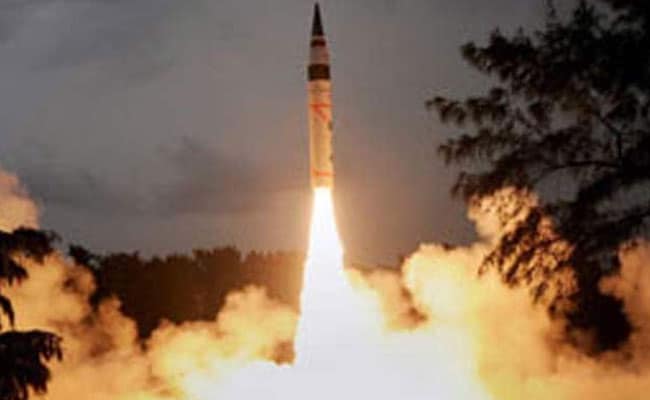India on Thursday successfully carried out the night trials of the nuclear-capable Agni-V ballistic missile, which can hit targets
beyond 5,000 km.
“The test was carried out to validate new technologies and equipment on the missile which is now lighter than before. The trial has proved the capability to enhance the range of the Agni-V missile, if required,” sources said. Sources said the missile has been made lighter by adding lighter composite material which will enable the missile to go longer ranges.
India had launched the last Agni-5test in October 2021.
The nuclear-capable ballistic missile was fired from Abdul Kalam Island, off the coast of Odisha. This is the ninth flight of the Agni-V — a missile first tested in 2012 — and was a routine test, Defence Ministry sources said.
The missile, which uses a three-stage solid-fuelled engine, is capable of striking targets at ranges up to 5,000 kilometre with a very high degree of accuracy, according to the Defence Ministry.
The Ministry further stated that the successful test of Agni-V is in line with India’s stated policy to have ‘credible minimum deterrence’ that underpins the commitment to ‘No First Use’.
While the test was carried out days after the clashes, it had been planned earlier. India had announced its intention to test a long-range missile and issued a NOTAM or Notice to Airmen well before the incident in Arunachal’s Tawang.
With the incursion in Arunachal, China had tried to “unilaterally change the status quo” on the de facto border known as Line of Actual Control last week, triggering clashes that left troops on both sides injured, the government had said, adding that the attempt had been successfully repulsed.
The incident is thought to be the most serious on the nuclear-armed Asian giants’ disputed frontier since 2020 when 20 Indian troops and four Chinese soldiers died in brawling in Ladakh’s Galwan Valley.
China and India fought a full-scale war in 1962 over control of Arunachal Pradesh, which Beijing claims in its entirety and considers part of Tibet.
The clash in Tawang followed joint military exercises that irked Beijing last month between India and the United States in Uttarakhand, which borders China.























